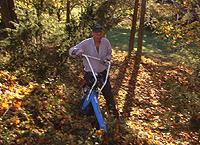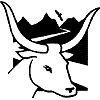HNV Showcases
Gräsö – changing land-use
 Deciduous trees were pollared to increase winter fodder for sheep and cattle. Ash was the most commonly used, but birch, whitebeam and lime (Tilia sp.) were also pollared. The pollared trees became favoured as nesting sites for birds and bats and a popular habitat for large number of insects, moss and lichen. In one specific village on Gräsö 2000 pollared trees survive.
Deciduous trees were pollared to increase winter fodder for sheep and cattle. Ash was the most commonly used, but birch, whitebeam and lime (Tilia sp.) were also pollared. The pollared trees became favoured as nesting sites for birds and bats and a popular habitat for large number of insects, moss and lichen. In one specific village on Gräsö 2000 pollared trees survive. As new agricultural practices, artificial fertilizers and modern seed were introduced to farming on Gräsö, the meadows were put under the plough. Today only small remnants remain. For the last 10 years there has been a project on Gräsö to encourage landowners to manage their meadows in the traditional way. The Uppland Foundation (owned by the councils and regional authorities in Uppland) lends out small, old style single-axle mowers to landowners who wish to mow small meadows.
As new agricultural practices, artificial fertilizers and modern seed were introduced to farming on Gräsö, the meadows were put under the plough. Today only small remnants remain. For the last 10 years there has been a project on Gräsö to encourage landowners to manage their meadows in the traditional way. The Uppland Foundation (owned by the councils and regional authorities in Uppland) lends out small, old style single-axle mowers to landowners who wish to mow small meadows. To fight the diminishing biodiversity of the agricultural landscape, the WWF Sweden and Upplandssstiftelsen (The Uppland Foundation) are, since the early 1990s working for an agricultural production system that ensures the survival of both rural people and the natural species of the agricultural landscape. The project addresses all aspects of production from grazing (e.g. with suckler cows) to the and marketing of meat produced on semi natural grassland.
To fight the diminishing biodiversity of the agricultural landscape, the WWF Sweden and Upplandssstiftelsen (The Uppland Foundation) are, since the early 1990s working for an agricultural production system that ensures the survival of both rural people and the natural species of the agricultural landscape. The project addresses all aspects of production from grazing (e.g. with suckler cows) to the and marketing of meat produced on semi natural grassland. Lady’s Slipper (Cypripedium calceolus) is an orchid that grows on alkaline soils with changeable water table. One centre of recovery of the species is Roslagen and Gräsö. Lady’s Slipper is pollinated by sand bees (Andrena spp.) whose habitat is being threatened by scrub invasion of the meadows. The Lady’s Slipper is being threatened by draining the arable land and intensive forestry practices.
Lady’s Slipper (Cypripedium calceolus) is an orchid that grows on alkaline soils with changeable water table. One centre of recovery of the species is Roslagen and Gräsö. Lady’s Slipper is pollinated by sand bees (Andrena spp.) whose habitat is being threatened by scrub invasion of the meadows. The Lady’s Slipper is being threatened by draining the arable land and intensive forestry practices. Small patches of semi-natural vegetation between the fields and meadows act as a refuge for many farmland species and increase the overall diversity of the landscape.
Small patches of semi-natural vegetation between the fields and meadows act as a refuge for many farmland species and increase the overall diversity of the landscape.After a phase of severe intensification in the 1960s some of the arable fields are returning to their former species richness.
© Photos Gräsö: Sven-Olov Borgegård, Maria Hoflin, Ola Jennersten, Upplandsstiftelsen


